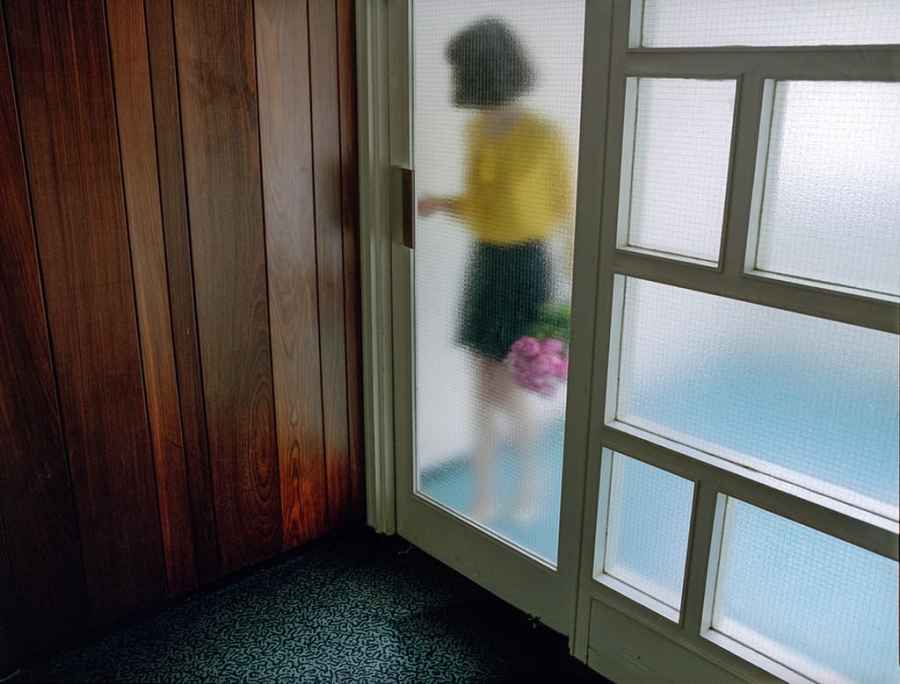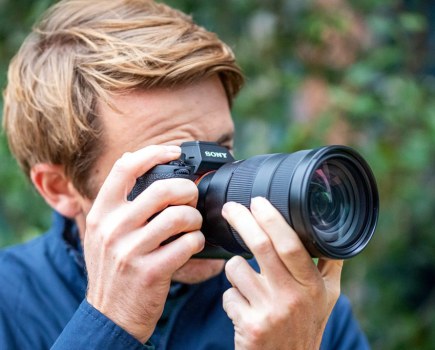Ian Howorth thinks his Instagram account is a bit of a mess. There are, however, around 150,000 people who disagree with him enough to follow his every move, and a very good number of those tune in to like his images within minutes of them being posted. In fact it was on the strength of the pictures he shows on his Instagram story that AP got in touch with him for this interview. He is modest about his online success and says that as much as he really does appreciate the followers, the likes and the messages, the number of followers he now has is not what drives him.
‘It’s a nice ego stroke whenever you need one,’ he tells us, ‘but I got over it when the follower numbers reached 50,000. Beyond that it just felt like “more” and doesn’t do me any extra favours. I am very grateful though. One of the great things about Instagram is that it keeps people shooting outside of project work and keeps you motivated to shoot all the time. Photography, like most things, is better when it is shared.’
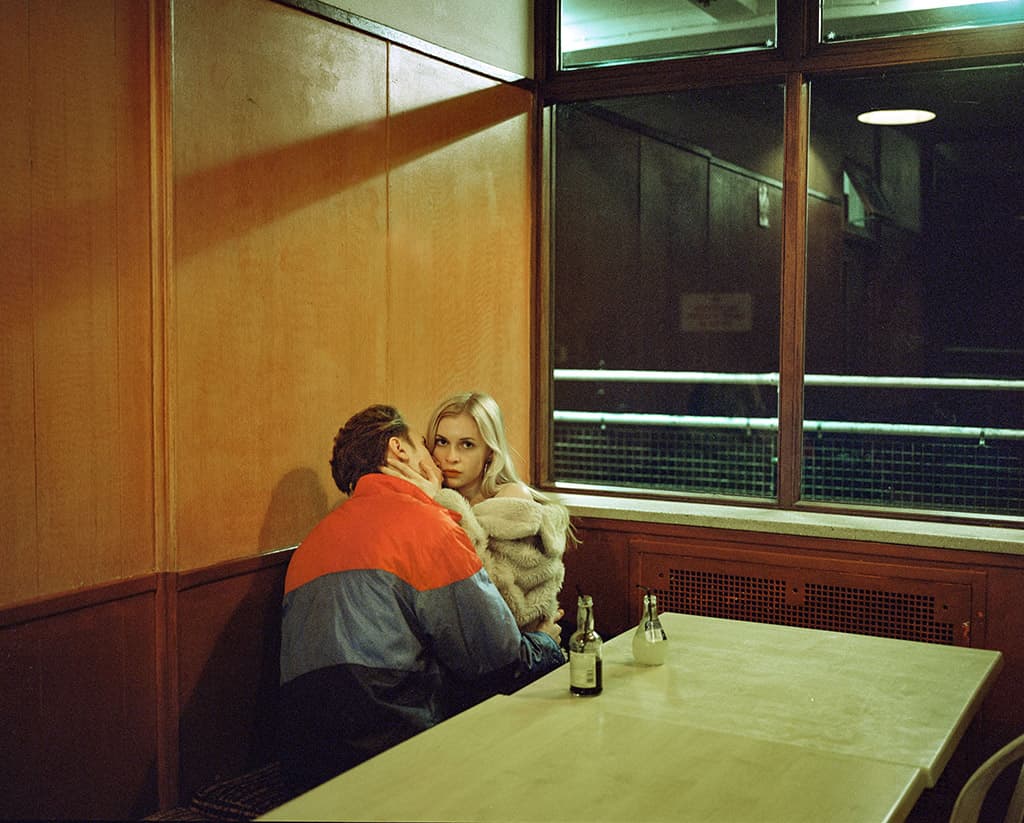
Make Out City
Inspired by old movies
And Ian does seem to be shooting all the time, making pictures that mean something to him on an emotional and visual level, and that he hopes will mean something to us too. Heavily influenced by the movie-watching habits of his parents, Ian grew up surrounded by images of the 1960s, ’70s and ’80s which has clearly marked the way he sees the world, the subjects he seeks out and the style in which he records his photographs. ‘The look is engrained in my idea of what is supposed to be attractive,’ he explains.
Using film is a big part of achieving that style too, as Ian says the look he aims for can’t be found in digital cameras. ‘I work with digital cameras all day for my nine-to-five, running the social media for camera retailer MPB. They are great but film gives me a look I can’t yet get with a digital camera. I’m not a film snob,’ he emphasises, ‘and I don’t need to touch the emulsion – and when a digital camera comes out with a look that pleases me I’ll be sold. At the moment though I can only get the look I’m after from film.’
When asked about what it is that film gives him that digital photography doesn’t, Ian says: ‘It’s quite hard to explain, but to me digital looks like “capture”, not art how I see it. It’s very factual. I don’t have anything against digital photography, and there are lots of people creating wonders with it, but at the moment digital photography requires far more work than I am prepared to put in. If I did all that work I’d feel like a digital artist, not a photographer. Don’t get me wrong, I have pictures I’ve shot digitally that I adore – but lots that I don’t. But when I get a good picture with a digital camera I always know that had I shot it on film it would have been even better.’ It’s quite unusual for a photographer to suggest that shooting digitally is more work than when shooting with film, as most would consider digital photography very much more convenient. ‘But photography and art has never been about convenience,’ Ian says.
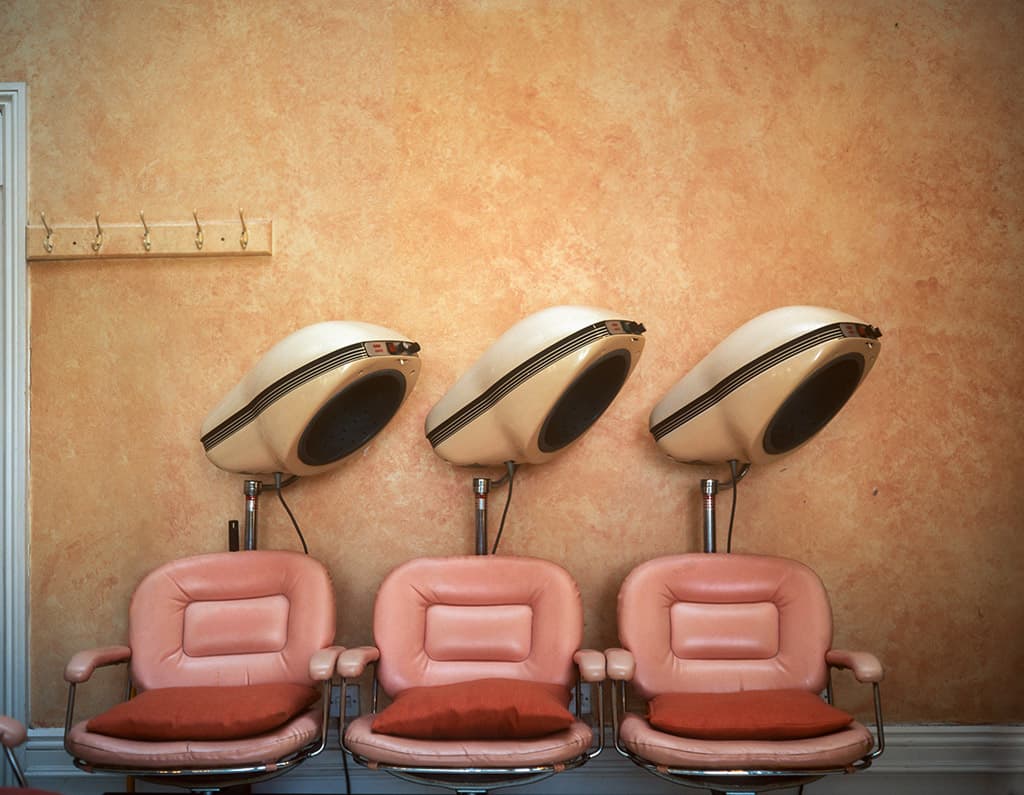
Mandy’s
‘That’s not what it is about. It isn’t supposed to be convenient. It is supposed to be hard. I like things that are difficult. Not only does it separate you from the rest of the field, it teaches you something – something you can’t quite put your finger on but something that lives inside you. It sounds incredibly pretentious to someone who doesn’t understand what you do, but experience teaches you things that people who don’t have that experience just don’t understand. The hard work with digital photography comes after the shoot to make the picture look like something, but with film the picture is finished as soon as the film is processed and scanned. It really doesn’t need much more work.’
Ian started life as a filmmaker but found the process took too long and cost too much money. He had always taken stills too with a Canon 7D and a Nikon D810, but when a friend gave him an Olympus OM-1 he ran a roll of Fomapan black & white film through it and loved it straight away. ‘The next weekend I took it to Seaford with some friends and the weekend after that I was going to Peru for a three-week trip. I immediately decided to take the film camera and 30 rolls of film. I took a digital camera too, but I shot all the film. Most of the shots came out looking terrible, but I loved it.’ Ian says he enjoys the thought process that he needs to go through when shooting with film and when the results can’t be viewed immediately.’
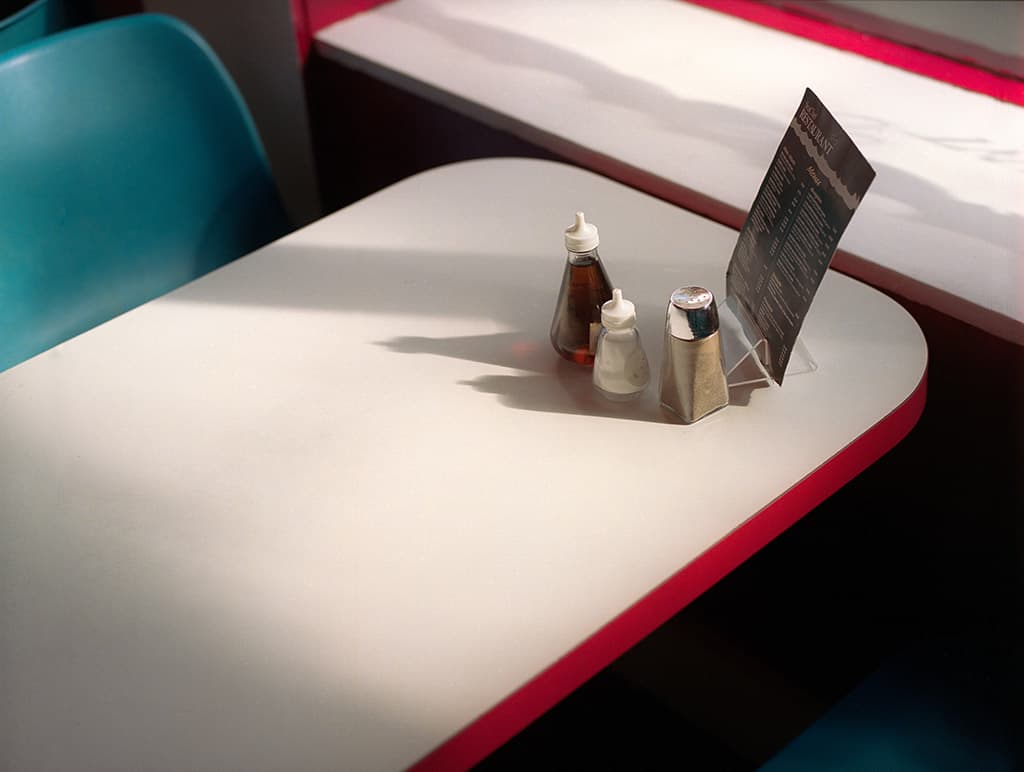
Composition in red and blue
I’m incredibly impatient with everything and I don’t have much will power to do things I don’t want to do, but shooting film has taught me patience. I like that I don’t rely on a viewfinder to get my exposure correct – with film I have to know what I’m doing. I can’t correct things in post, so I have to tighten myself up like a racing machine. I like that process.’
The cameras
Ian shoots with a mixture of 35mm and medium format cameras. After the Olympus he bought a Canon A1 but then moved to a Nikon FM3a for the combination of aperture priority exposures, the exposure lock button and a top shutter speed of 1/4000sec. When he needs medium format he has a choice of the Mamiya 7 ll and Makina 67 rangefinders and the Hasselblad H1 SLR. ‘I shoot a lot of 35mm even though I have three expensive medium format cameras, but it’s about what you need in the shot. 35mm is for charm and a certain aesthetic that requires a bit of grain and not perfection.

‘Medium format cameras are so much more cumbersome and annoying, but as soon as you start shooting medium format everything changes. There are shots I’ve taken that I have no idea how they got to look like that. Medium format gives you a depth of colour and light that so far I haven’t seen from a digital camera. It has a gradation from highlight to shadow that is so smooth in its transition that digital photography can’t replicate it. And there’s a softness in its sharpness that I can’t explain. A good medium format lens will be sharp but it doesn’t scream about it – in fact it is often the last thing you notice. With some digital camera systems the sharpness is the first thing you notice. My Mamiya 7 ll can be a bit sharp sometimes so I might soften it with a Tiffen Pro Mist filter.
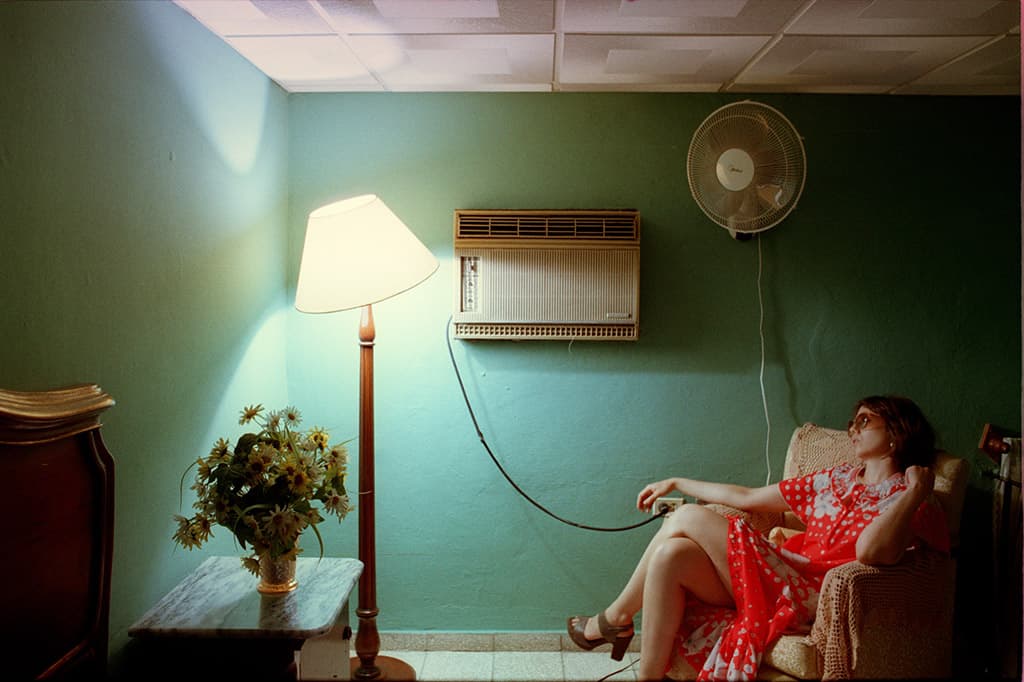
Em
‘The difference between 35mm and medium format is like if you drew a landscape on a big piece of paper and a small piece of paper. On a big piece of paper there’s space for more detail and colour information than there would be on a smaller piece of paper. The extra size allows room for those gradated tones and colours. Medium format film cameras are a headache, especially when compared to cameras like the Hasselblad X1D and the Fujifilm GFX system, but the extra effort is worth it.
‘I don’t have a massive attachment to the cameras though. They are there just to do a job. They all have a different purpose, and when a camera doesn’t have a purpose for me any more I just get rid of it.’
Which film?
‘It has taken me a long time to find the film I like, and I’ve done it by trying lots of different emulsions. My favourite is Ferrania Solaris 100 from Italy. They stopped making it in 2008 and the last batch expired in 2010, so it is hard to get hold of. It creates warm reds, yellows and greens so they just pop. You can almost see a colour cast, but the whites stay white. You can pay a lot for rolls now, though I always check the conditions in which it has been stored.
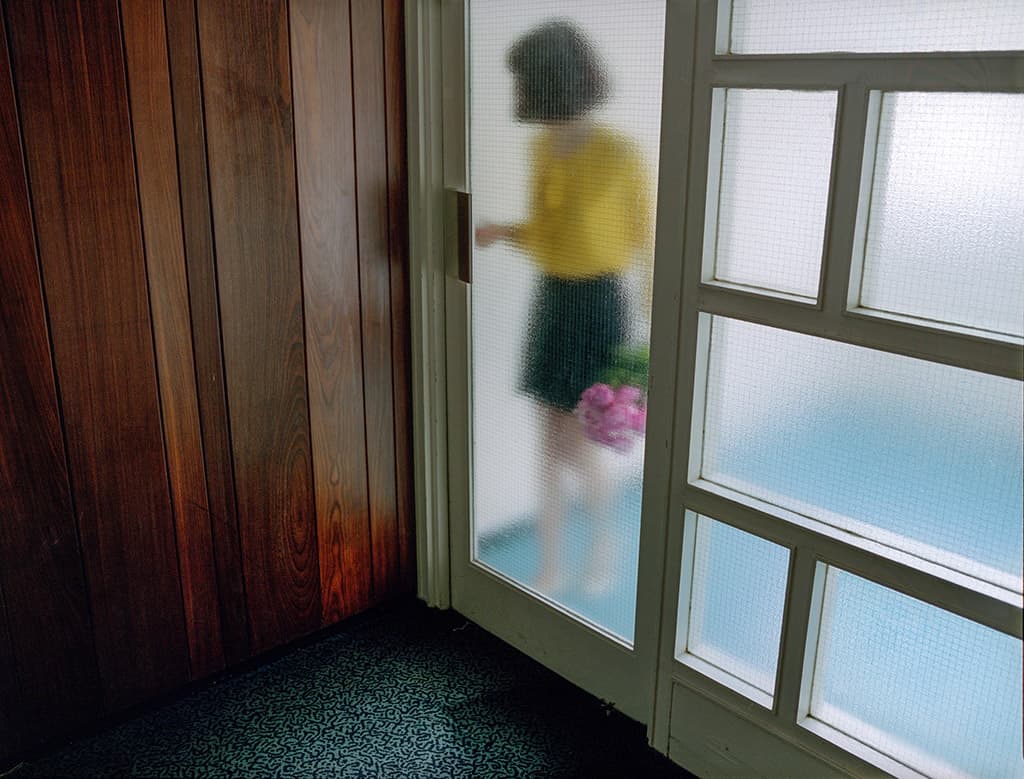
The arrival
For medium format project work I’ve become a bit more sensible after getting some terrible results from expired 35mm, so if I’m shooting a model or a portrait where I need consistent results I shoot Kodak Portra 800 or 400, or off-cuts of cinema film. I also like Lomography 400 and 800 as it provides lots of colour and really nice grain. I need a look to be replicable when I’m shooting a project, so it’s no good getting halfway through and finding you can’t get any more of that film. For personal work I like expired Kodak Portra VC and Ektacolor Gold, but I’m always looking out for different things. I’ve learnt which expired film to buy now, and have a rule that for ISO 100 film I’ll go back as far as 2004 whereas for 400 and above I stick to 2008. Medium speed films degrade more quickly. I also ask lots of questions when I’m buying about how it has been stored.
‘I do shoot slide film too, but not as much. I was involved with the launch of Kodak Ektachrome in 120 last year, but I also use Fujifilm Provia 400X which I love. Provia 400X is all expired now, but it has held its speed really well. ‘I don’t process my own film, as I don’t have the time. I’d like to though. I don’t think I’d ever print in colour, but I’d love to print my black & white negatives in a darkroom.’ Ian uses the local Brighton Film Lab for his film processing, and gets the negatives back without prints or a contact sheet.
He uses a lightbox and a loupe to inspect the results and uses an app on his phone to view negatives as positives. He then uses a scanner to digitise his photographs so he can post on social media and create prints and books. As he shoots both 35mm and 120 roll film he chose a Nikon Coolscan 9000. ‘This gives me 4000dpi,’ he says ‘so I very rarely need to do a drum scan. The quality of your scanner is really important – sell a camera if you need to so you can get a good one, especially for medium format. There are lots of good scanners for 35mm, but not for medium format.
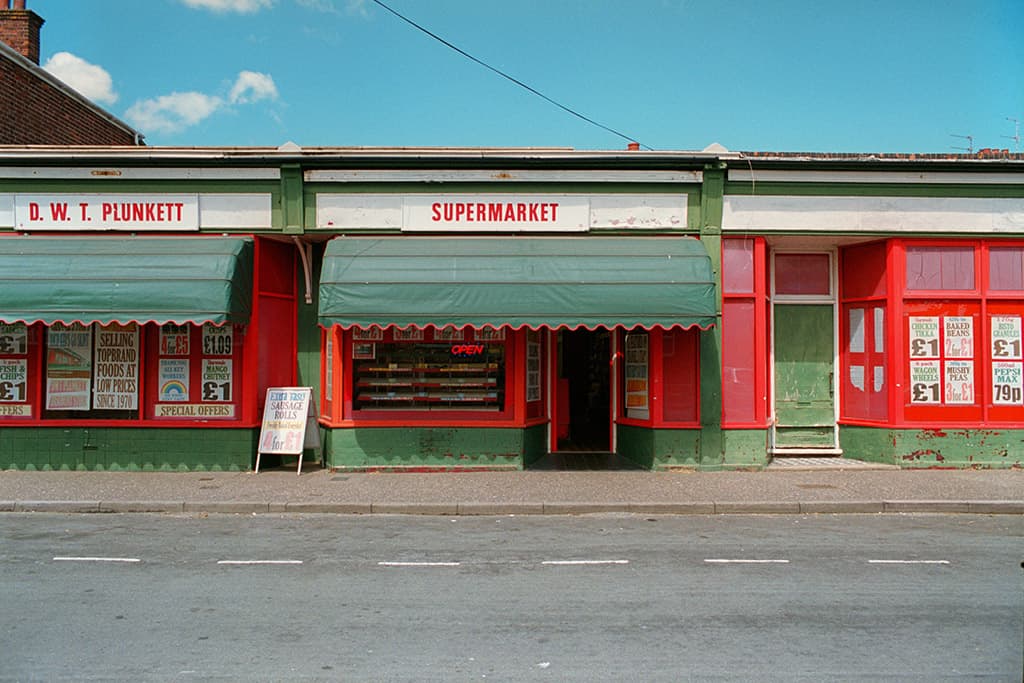
D.W.T’s
‘I don’t do much editing with my scanned images. With digital I have to do a lot of editing, but digital is meant to be a blank canvas and is made not to have a vibe in the way that film is and does. ‘Shooting film is very expensive, but I have a simple life and I don’t spend money on a lot of other things and fortunately my girlfriend likes the things and places that I do, and she doesn’t need fancy holidays. Other people spend loads of money on clothes and booze, but I spend that money on film. I do get a return though, as print sales and books make about 25% of my income. Shooting digitally would be a lot cheaper, but I don’t shoot excessively. I might shoot ten rolls over a long weekend trip and 20-30 over a week away abroad. So I’m quite moderate. I know what I’m looking for and don’t just shoot anything.’
Locations, themes and atmosphere
‘Photography for me has become very simple, I know what I like – it’s all about colour and emotion. I don’t like going where everyone else is going, I want to find special things and places. The places that attract me, that have atmosphere and that 1970s vibe tend to be a bit more downtrodden. When you see something old in Brighton where I live it’s usually a reproduction, so I like to find places that haven’t modernised.
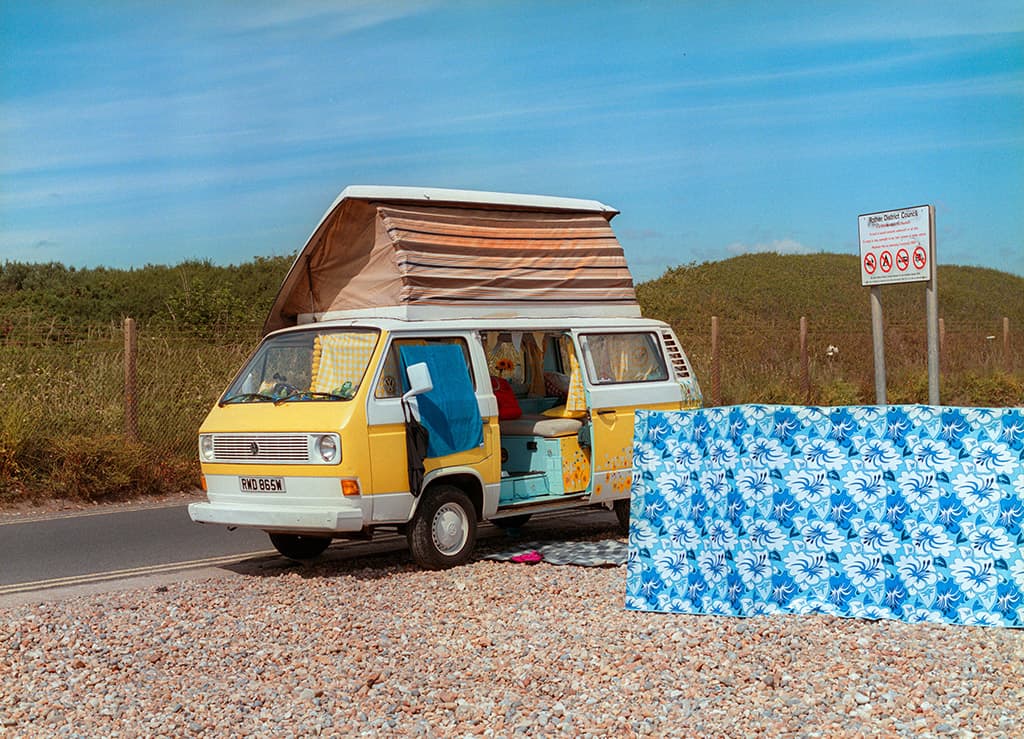
Things were better made in the ’70s and built to last. I like the design and textures of that era. My pictures are stories about people, even when there are no people in them. I want the pictures to tell all the story about the place so I don’t want to rely on acres of text. My pictures aren’t always about that specific place either, I just look for things and scenes that sum up a certain vibe. ‘My work is all about emotion – that’s all I’m trying to convey. It could be a can of Coke on a bin – I don’t care how I get it. If I like it then I shoot it. There are emotional and technical ways of thinking about photography. Sometimes they are intertwined and sometimes they are very separate.

‘I doesn’t really matter to me what other people think about me shooting on film. I thought it would be a way to differentiate myself, but actually all the art photographers I like also shoot on film, so it doesn’t. I get some funny remarks at work, and people joke that my cameras are expired as well as the film I use, but most quite like the idea that I use film. Actually it’s older people who don’t understand why I want to. They’ve all switched to small and light digital cameras and don’t get why I like to shoot on film. You’d think they would appreciate the qualities I’m after, especially those who have been taking pictures all their life. They aren’t saying, “I’d like to but I can’t” – they really don’t get what I’m doing.’
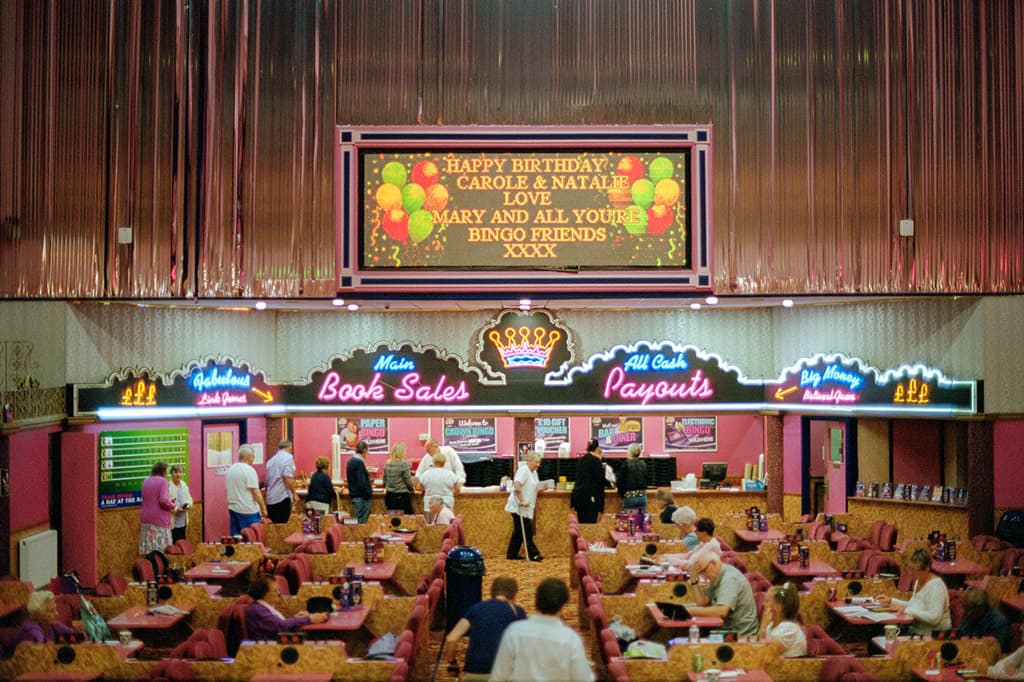
Three tips for new photographers
1) Don’t be too scared of picking up a film camera. Film is forgiving and even in the automatic modes you will get a decent result.
2) Don’t be afraid to add that vibe to your workflow. It will add a certain something to your pictures. If you don’t like the look, then you can always just sell the camera.
3If you like the idea of shooting on film, speak to other photographers who are doing it already and look at the work of film photographers. You don’t need to speak to digital photographers for advice – that would be like asking Roger Federer for advice on making a vegetarian lasagne instead of asking him about tennis. Listen to the people whose work you admire and who shoot the way you want to shoot.
Follow Ian on www.instagram.com/ihoworth or see his website. Prints are available here.
’

